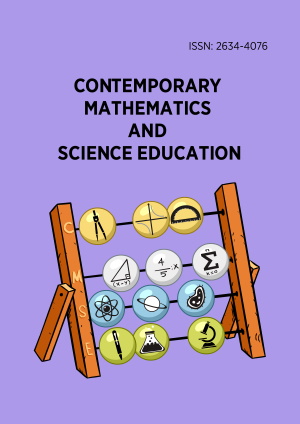The Contemporary Mathematics and Science Education (CONMATHSCED) is an Open Access, peer-reviewed, quarterly-published, academic journal that publishes scientific articles on mathematics education and science education.
ISSN: 2634-4076 (Online)
CURRENT ISSUE
Volume 6, Issue 2, July 2025
In Progress
Research Article
Contemporary Mathematics and Science Education, 6(2), July 2025, ep25008, https://doi.org/10.30935/conmaths/16332
Research Article
Contemporary Mathematics and Science Education, 6(2), July 2025, ep25009, https://doi.org/10.30935/conmaths/16379
Research Article
Contemporary Mathematics and Science Education, 6(2), July 2025, ep25010, https://doi.org/10.30935/conmaths/16437
Research Article
Contemporary Mathematics and Science Education, 6(2), July 2025, ep25011, https://doi.org/10.30935/conmaths/16438
Research Article
Contemporary Mathematics and Science Education, 6(2), July 2025, ep25012, https://doi.org/10.30935/conmaths/16448

 The articles published in this journal are licensed under the CC-BY Creative Commons Attribution International License.
The articles published in this journal are licensed under the CC-BY Creative Commons Attribution International License.